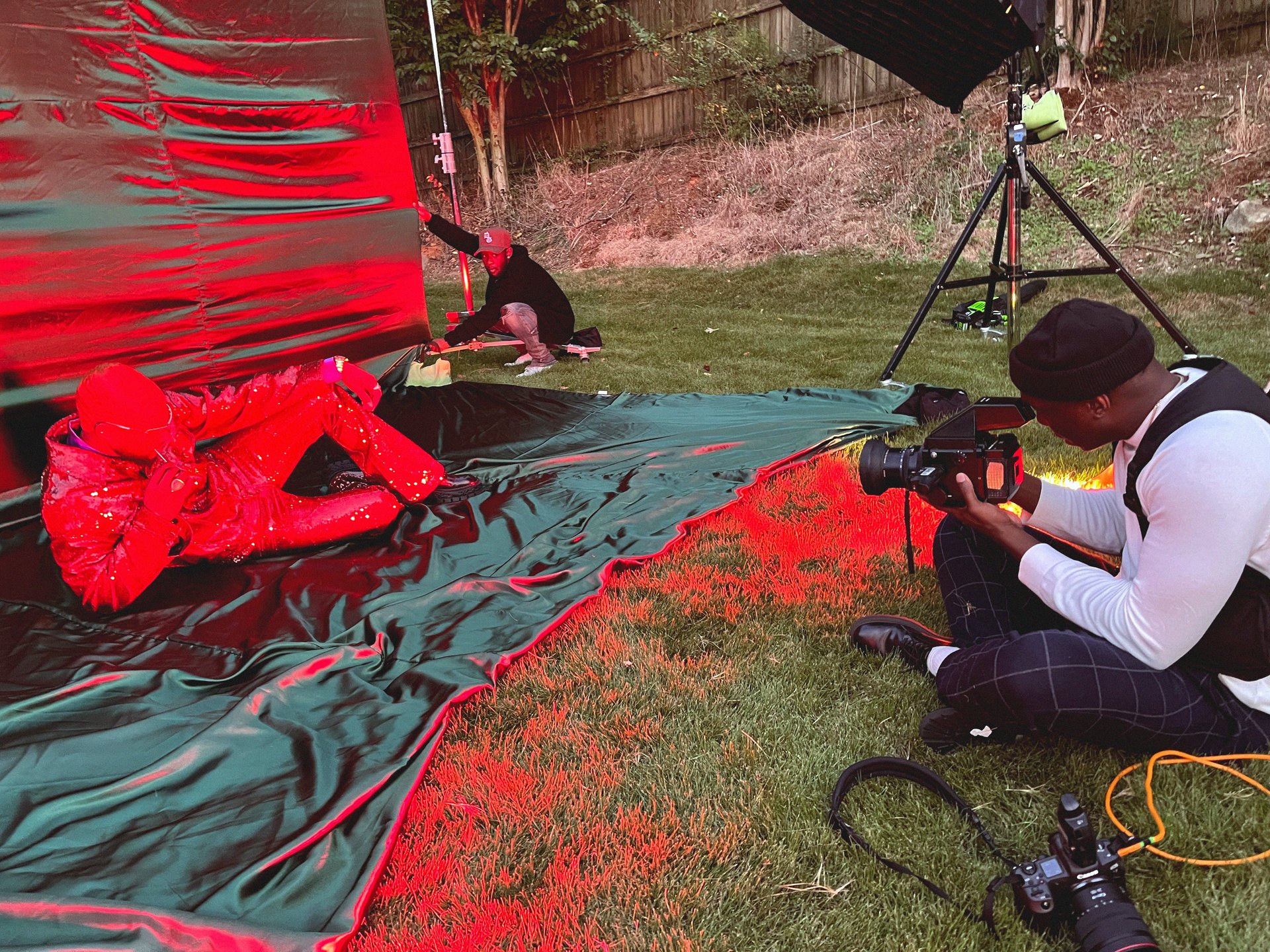How many pictures do you usually take?
I love this question. I prefer to avoid taking a lot of pictures. If I’m just taking pictures, that means something isn’t working, or I do not like something. If I’ve taken 30 – 50 photos, something should be in there that works. If we’ve made it into the 100s, the shoot is off, and there’s also the chance we will lose the talent because they start to get tired.
When do you know you have a good picture or that you’ve got your image and it’s a wrap?
Typically, it’s the reaction from everyone on set. When we pause to flip through the images, and everyone reacts to the same photos simultaneously, that’s usually when you know. It’s even better if the publication is on-site as well because they see the talent’s reaction and know that “okay, this is the photo.” This makes it easier for everyone, especially the photo team when they return to the office to make their selections.
As we watch the world evolve, I’d be interested in hearing your thoughts on print versus digital media? Does it make you feel like your work is fleeting because it gets somewhat dated so quickly now?
I’ve gone back and forth on my feelings about this. There’s something about print that is just a little more timeless and tangible. I save all my print magazine covers because one day they’ll be gone, whereas with digital, you can just go on the internet, and they’ll forever be there. But, on the other hand, some of my contemporaries feel it’s reducing the value of photography.
Tell me how you got to this point as a published celebrity photographer?
It’s a rabbit hole that I fell into unintentionally. I started shooting models, and during that time, I was told that “you have to shoot at least one celebrity to move to the next level in your career.” Going back to Andra Day being my first major celebrity, I believe it was the experience she, her agent, and everyone else on set that day had with me. It started snowballing after that, and I’m assuming that was because word got around that I was pleasant to work with.
I’ve since built a reputation in Hollywood as the photographer who showcases Black women at their best. I have a strong point of view regarding shooting our women. Ultimately, I want everyone leaving my set to feel great about what we just created and confident in the images we put out.
You also shot Stacey Abrams for The Wall Street Journal. How did you approach working with a high-profile political figure? What was different?
With Stacey and/or anyone in her shoes, it’s not about fashion, pretty, or glam. It’s about showcasing strength and Black beauty and paying attention to the colors she wears. I wanted to showcase Stacey in her natural environment, which was her home in a natural setting with natural light while simultaneously making the imagery elegant, beautiful, and strong.
I saw you directed and photographed Meg Thee Stallion’s COACH campaign. Talk to us about how you landed this opportunity and what the experience was like.
I believe this opportunity came from having a good rapport and foundation from the first shoot she and I did together. Between Meg, Zerina Akers, and I, we made magic happen, most likely because we all mesh so well with each other.
You already have several heavy hitters, but I’m curious as to what’s, or should I say, who’s next on your list?
The goal for me is Rihanna. Of course, she’s someone with Caribbean roots, so I’m crossing my fingers that somehow my name gets tossed in the bucket for one of her upcoming projects, whether her next album or her Superbowl performance next year.
What do you want people to know about your journey as a photographer, specifically one who isn’t based in Los Angeles, NYC, or Europe?
I always had a Plan B because my first plan could’ve not worked, and sometimes that is how the world goes. I invested in myself immediately when I spent $5,000 on the best camera I could find. I know many people can’t do that. Honestly, I wasn’t in the position to do that either, but I decided to buy that camera even though I could’ve used that money on something else.
There was a time when I couldn’t get stylists and models to work with me because I was new, so I would pay them. I made all those investments in myself so that my book could look like I was already in the industry when it was time to present to these big agencies and clients, even though I was shooting these portraits right in my home.
IG: @Chriseanrose







